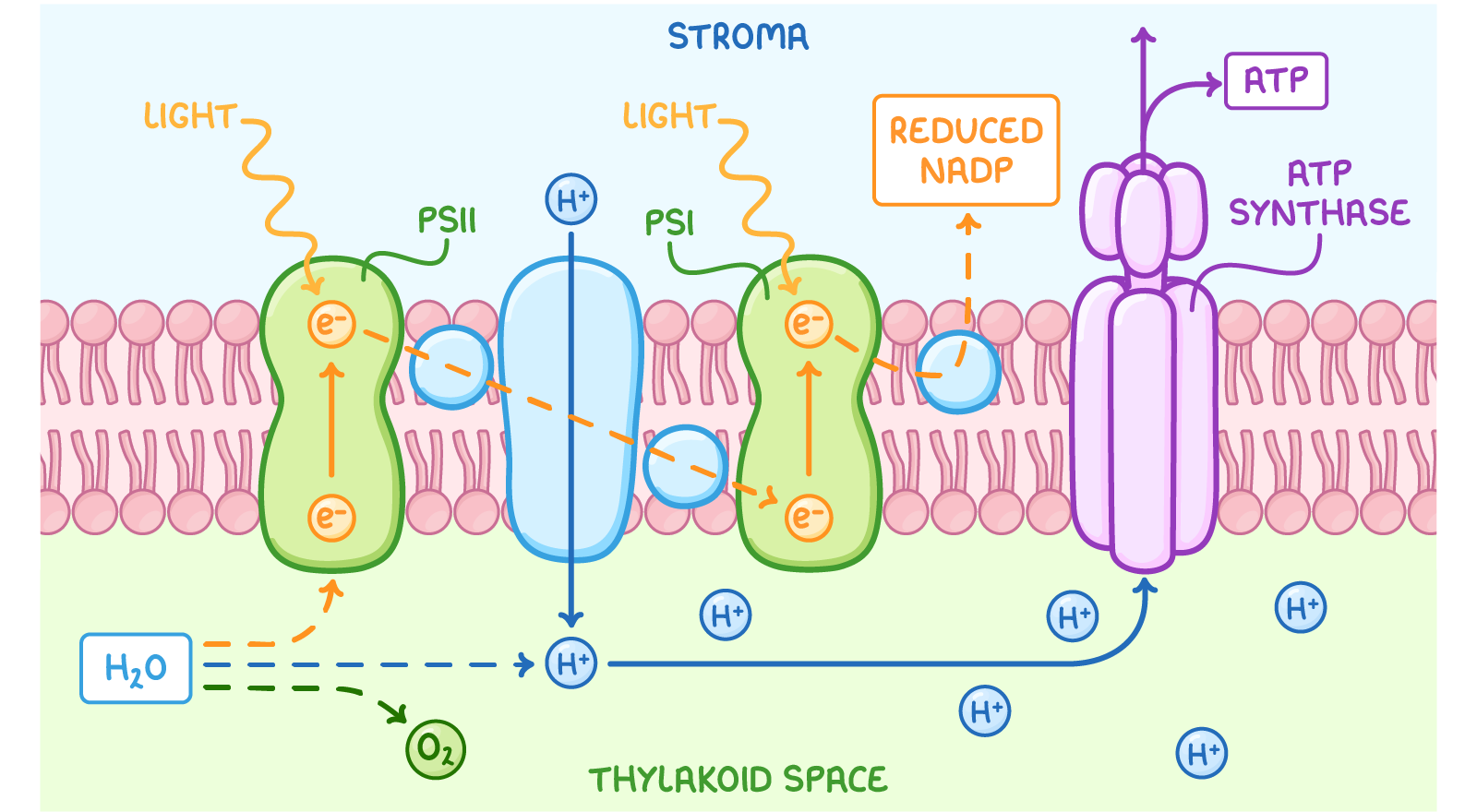Light-dependent Reaction
This lesson covers:
- Non-cyclic photophosphorylation
- Cyclic photophosphorylation
Non-cyclic photophosphorylation
Photophosphorylation is the process by which ATP is formed using light energy.
There are two types of photophosphorylation that can occur in the light-dependent reactions of photosynthesis: non-cyclic photophosphorylation and cyclic photophosphorylation.
Non-cyclic photophosphorylation uses water and light energy. It produces ATP, reduced NADP, and oxygen as a by-product.
It involves the following key stages:
- Absorption of light energy by pigments.
- Electron transfer along the electron transport chain.
- Photolysis of water.
- Chemiosmosis.
Let’s look at these stages in more detail.

Absorption of light and the electron transport chain
- Light energy is absorbed by pigments.
- This excites electrons in the pigments in photosystem I (PSI) and photosystem II (PSII) reaction centres.
- Electrons are lost from the pigments (photoactivation).
- Electrons are transferred to an electron carrier molecule.
- Electrons are passed along the electron transport chain, releasing energy as they go.
- The electron from PSII replaces the lost electron from PSI.
Photolysis of water
- Light is used to split water into electrons, protons, and oxygen: 2H2O → 4H+ + 4e- + O2.
- The electrons replace those lost from PSII during photoactivation.
- The protons are used for ATP production and combine with electrons to reduce NADP.
- Oxygen gas is released as a by-product.
Chemiosmosis generating ATP and reduced NADP
- The energy lost by electrons along the electron transport chain is used to pump protons across the thylakoid membrane into the thylakoid space.
- This produces a proton gradient, where they are in a higher concentration in the thylakoid space.
- The protons then diffuse through ATP synthase into the stroma.
- This movement powers ATP synthase to produce ATP from ADP and an inorganic phosphate.
- NADP takes up protons and electrons from PSI in the stroma and is reduced.
- Reduced NADP is carried into the light-independent reaction.
Cyclic photophosphorylation
Cyclic photophosphorylation uses light energy to produce small amounts of ATP, and typically occurs when NADP is not available. It does not produce reduced NADP or oxygen.
It involves the following key stages:
- Light energy is absorbed by pigments and excites electrons in the pigments in PSI only.
- Electrons are lost from the pigments in PSI.
- Electrons are transferred to an electron carrier molecule and passed along an electron transport chain, releasing energy.
- This energy powers active proton transport across the thylakoid membrane from the stroma into the thylakoid space.
- ATP is produced as protons flow back into the stroma through ATP synthase.
- Electrons are returned to PSI, so no NADP is reduced.